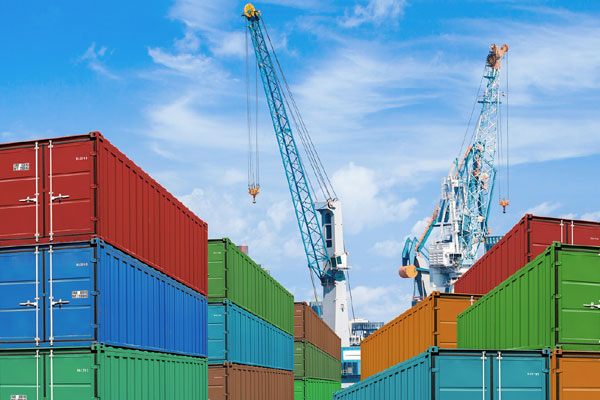
S Korea November exports fall less than expected
SEOUL, December 2, 2015
South Korean exports fell for an 11th straight month in November, while foreign orders shrank at a sharper pace, pointing to a further deterioration in global demand and prompting some analysts to call for more interest rate cuts.
November export data and a private manufacturing survey highlighted persistent downward pressure on Asia's fourth-largest economy from weak external demand, with factory activity shrinking for the ninth straight month.
But the activity survey, combined with other data in recent weeks, also suggested that the weak trade outlook was being offset in part by a recovery in domestic consumption, which could make policymakers more cautious about further easing.
Exports fell 4.7 per cent on-year in November, less than an 8.3 per cent fall forecast in a Reuters poll, government data showed. But several analysts noted the decline would have been much worse if not for big ship deliveries.
"Headline exports without vessels would have fallen 12 percent," said Wai Ho Leong, an economist at Barclays. "The broader trend remains unchanged - marked by high inventories, slower inventory clearance and a lack of production."
The trade ministry said export prospects remain bleak as China and other emerging economies were still slowing and Europe as a whole was struggling to regain economic momentum.
Minutes released late on Tuesday from the last Bank of Korea meeting on Nov. 12 showed some members of the policy board were more doubtful of the economic recovery than Governor Lee Ju-yeol, who has recently seemed reluctant to cut rates again.
"Weakness in exports will persist for a while and I feel downside risks to growth have increased," said one member in the anonymous minutes.
Exports to the European Union soared 52.5 per cent in November on-year but mainly due to increased sales of ships. Exports to China, South Korea's biggest trade partner, fell by 6.8 per cent, in their fifth straight monthly drop.
Imports fell 17.6 per cent in November, leaving the trade surplus at an all-time monthly high of $10.4 billion.
DOMESTIC DEMAND BETTER FOR NOW
Consumer inflation data and the manufacturing survey, meanwhile, suggested that domestic demand held firm in November, which supported optimism expressed by the government and the central bank for a consumption-led economic recovery.
The November inflation rate edged up to 1.0 per cent from a year earlier, a one-year high and beating expectations.
The Nikkei/Markit purchasing managers' indexes underscored the division between domestic and overseas demand. New export orders fell more sharply in November than in October but orders from domestic customers improved.
Data from the country's top mortgage lender showed on Monday that house prices rose for a 27th straight month in November on-month, bringing annual growth to the fastest since March 2012.
Still unless global demand improves, some analysts believe the Bank of Korea will have to cut rates further next year as price pressures are still weak and domestic demand will eventually succumb to the effects of the prolonged export slump.
"Given weak exports, low inflation, a tight 2016 budget, and micro tightening for household loans, we expect another policy rate cut in H1 of 2016," economists at Goldman Sachs said.
The BOK cut its policy rate by a combined 50 basis points in two steps in March and June this year to a record-low 1.50 per cent. Views in financial markets are currently split between favouring no change in South Korean interest rates for some months ahead, or a cut early in 2016. - Reuters







